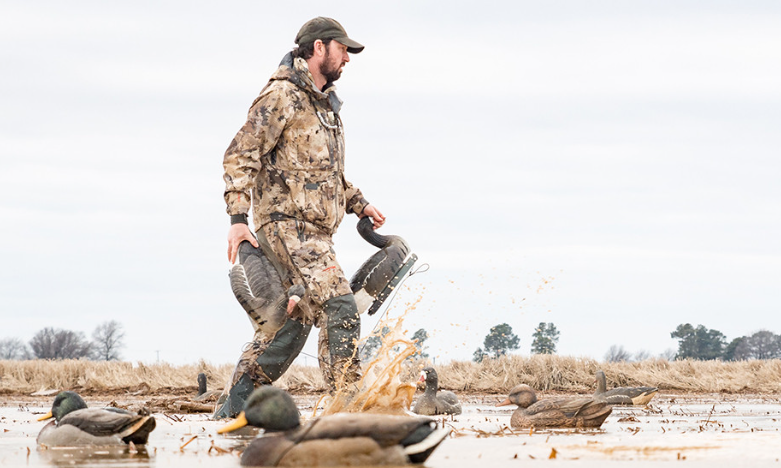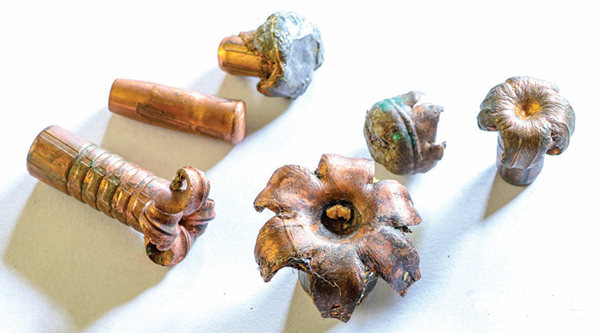With interest in chasing deer and elk booming this year, an expert details top tactics for tagging out.
Story and Photos by Scott HaugenIn an effort to remain the eternal optimist, there are good things I’ve seen come with the coronavirus, one of which has been a nationwide increase in the sale of hunting licenses. Some states are reporting more license and tag sales than they’ve seen in decades, and many of these are going to new hunters.
If you’re new to big game hunting, welcome. There’s always room for ethical hunters, and there’s no better way I can think of to enjoy the outdoors and put some of the planet’s best eating protein on your dinner plate. When it comes to hunting big game, there are two common approaches I find myself using. Both are productive and both optimize a hunter’s level of engagement with the land and animals.

While hunters pursue game to put quality meat on the table, there’s an element of excitement that arises when hard work, time afield and taking a shot come together, and nowhere is this thrill so vividly captured than through spot-and-stalk hunting.

Unlike still hunting, where ground is slowly covered while searching for game, with spot-and-stalk hunting, game has already been located and the hunter makes a move to get within comfortable shooting range. The most important pieces of gear for the spot-and-stalk hunter are optics, a wind- check bottle and quiet clothing.
Spot-and-stalk hunting begins with the hunter spotting game, then planning a stalk. When looking for big game at long distances – be it across vast sagebrush flats or distant hillsides – a spotting scope can help you cover a lot of land and see things in great detail. A spotting scope set atop a sturdy tripod will allow you to cover ground with your eyes, rather than your feet. Not only does this save hiking time while conserving energy, it greatly minimizes the chance of game detecting your presence.

When using a spotting scope to locate game, stay below the skyline. Having a tree, rock or hillside at your back will make it more comfortable and break up your body outline. In some situations, hunters may spend hours, even all day, looking for game through a spotting scope from a single place, so make sure you’re comfortable when the search begins.
Binoculars are also important in spot-and-stalk hunting. Game can initially be spotted with binoculars at a distance, then a higher-powered spotting scope can be used to evaluate the size of the animal. In some big game hunts, antler and horn minimum restrictions are in place, meaning hunters must be sure of their target. It’s nice to have a spotting scope to confirm the animal you’re about to make a move on is legal in the area you’re hunting.
Once an animal is located, don’t be in a rush. Watch the animal closely to see what it’s doing. If it’s bedded down, plan the best angle to commence a stalk, ensuring the wind is in your face or moving across your body as you approach. If the animal is feeding, watch what direction it’s moving (likely into the wind) and anticipate where it’s going, then plan your stalk. If it’s midday and hot, animals will often get up to rebed in shade. When this happens, your sighting may be brief, so mark the spot with surrounding landmarks, then plan your stalk.
Before a stalk commences, carefully note the position of any prominent trees, rocks, stumps, tall bushes or breaks in the land, as the closer you get to your quarry, the more unrecognizable the terrain becomes. As you stalk, use your binoculars to study the landmarks you’ve noted so that you can stay on track. These landmarks will be invaluable tools to pinpoint your target.
When stalking, ideally you’ll be hidden from the animal most, if not all, of the time. Remember, the eyes of game are far superior to ours, and if you can see them, they can surely see you. The goal of spot- and-stalk hunting is to come in from an angle so the animal will not see you.
Spot-and-stalk hunting is a true test of your hunting skills. Once a stalk starts, every move is carefully planned and the conditions continually monitored. Approach every stalk with an open mind, tuning in to anything and everything that can help you find success. At the same time, be on the lookout for birds and animals that, if spooked, can give you away.
Be patient, move wisely and focus on what’s happening around you at all times. When mistakes are made, evaluate what went wrong and learn from them. As you’ll discover with spot-and-stalk hunting, trial and error are the best learning tools and each time you head afield, you can be receiving an education.


Still hunting is another very common approach to big game hunting, but the literal translation may not accurately depict the definition. Still hunting is not being totally still all the time. Still hunting is when a hunter slowly moves through a habitat, frequently stopping to glass and search for deer, elk or other game animals as they go. Still hunting is all about patience and paying very close attention to your surroundings, while looking for sign as well as game.
Before heading into the woods, check the wind direction to make sure you’re either moving into it, or against a steady crosswind. Early in the morning and late in the afternoon or evening, cool, more dense air falls from higher elevations. In an eort to keep the wind in your face so deer and elk don’t smell you, hunt uphill early and late in the day.
As thermals shift – rising uphill when temperatures increase during the day – hunts should begin on the high ground. Moving downhill into the wind will help keep your scent away from animals below. Big game animals have an astounding sense of smell, and if they catch wind of you, you likely won’t get a shot.
Two important items a still hunter will want to have are a wind-check bottle and binoculars. The wind-check will allow you to regularly monitor wind direction so you can be sure to keep the wind in your favor at all times. Should the wind change and begin blowing from you toward the area you’re headed, back out and come in from another angle, wait and let the thermals stabilize, or return another day.
Binoculars are a valuable hunting tool, even in heavy timber and dense brush. While many hunters rely on binoculars for spotting game from great distances in open terrain, they are also ideal for locating parts of animals in thick habitat. Search for a horizontal back or belly line of an animal amid the vertical growing foliage. Look for the flicker of an ear, the black or white color of a tail and the moist, shiny nose of an animal. White throat patches of deer, and light-colored rump patches of both deer and elk, for example, can often be seen in surprisingly thick habitat.
Antlers of bedded bucks and bulls can also be detected with binoculars, as can the shining black fur of a wild pig that has recently wallowed. The rate at which a still hunter moves is dictated by wind direction, weather, forest floor conditions, the amount of sign being seen and how far the hunter wants to travel. Blacktail deer hunters along the northern California coast, for instance, may take two hours to cover 100 yards when still hunting in prime habitat. If hunting these deer closer to Interstate 5, in more open terrain, a mile might be covered in an hour.


With still hunting, use the terrain and foliage to your advantage. Don’t be tempted to move through open areas where you can easily be seen. In still hunting, the objective is to use the element of surprise to locate game, and hopefully take a shot without an animal even knowing you are near. When slowly covering ground, utilize low spots in the land. Never skyline yourself when still hunting, as that makes it easy for game to spot you. The idea is to remain hidden enough so as not to be spotted by game, but keep yourself in a position to locate game.
When pausing to look for game, use trees, brush, foliage and shadows as cover to hide you. Ideally you’ll stop behind cover, then slowly move forward as you glass the area. On sunny days, stop in the shade when you want to glass for game. Don’t be tempted to rush to a high, open piece of land, then stand there hoping to locate game. You might see game, but they’re likely going to be on high alert by then and will spook before a shot can be taken.
Whether you hunt big game through spot-and-stalk or still hunting, the level of engagement you’ll experience is what makes these approaches so addicting. Focusing on the land, the animals and the ever-changing conditions keeps your mind focused every moment, and when it all comes together, the end results will leave you wanting more.
Editor’s note: For signed copies of Scott Haugen’s popular DVD, Field Dressing, Skinning & Caping Big Game, send a check for $20 (free S&H), to Haugen Enterprises, P.O. Box 275, Walterville, OR 97489, or order online at scotthaugen.com.










